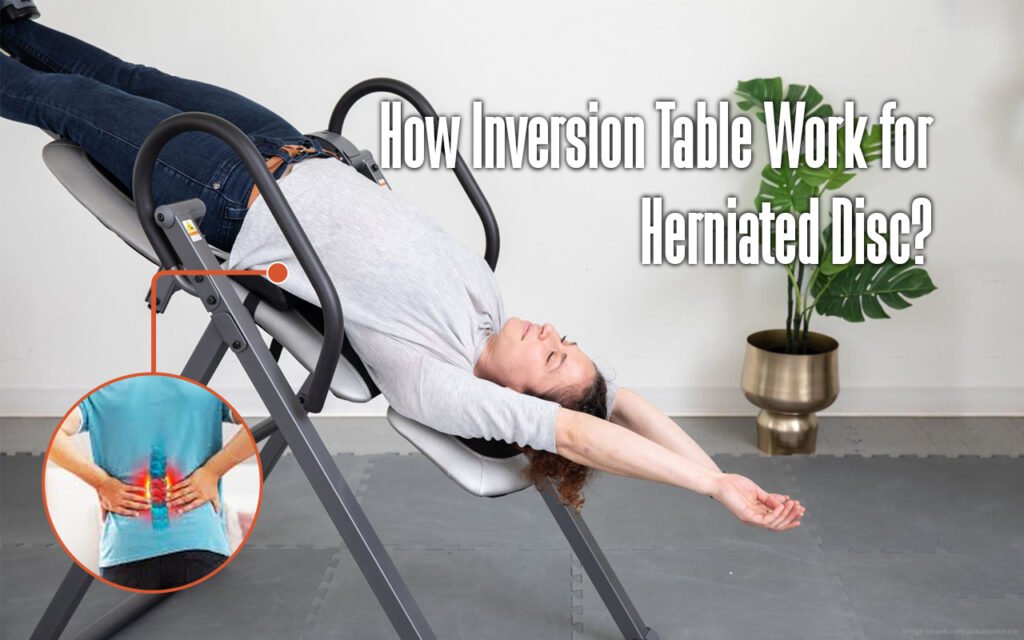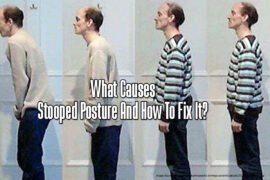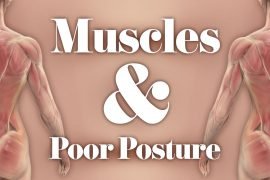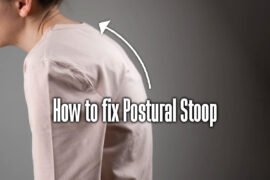Back pain is a prevalent condition that impacts millions of individuals globally, causing discomfort and inconvenience. One of the primary culprits behind back pain is a herniated disc. It occurs when the gel-like center of the spinal disc pushes through small tears in the outer layer. Herniated disc can cause extreme pain and severely limit one’s ability to perform daily activities. Inversion table becoming increasingly popular as a treatment option, offering a range of choices for those seeking relief. In this comprehensive guide, we’ll delve into the valuable role of inversion table in managing herniated disc. We will explore their benefits and precautions and recommend exercises to optimize your experience. Get ready to discover how inversion table can enhance your journey toward relief and recovery.
Understanding Herniated Disc
Table of Contents
Before we explore the benefits of inversion table for herniated disc, let’s take a moment to grasp the essence of this condition.
A herniated disc, which is also known as a slipped disc or ruptured disc, happens when a spinal disc’s soft inner substance (nucleus pulposus) pushes through a crack and tear in the outer layer (annulus fibrosus). Compression of nearby nerves can result in pain, numbness, tingling, and muscle weakness. Herniated disc commonly affect the lower back (lumbar region) and the neck (cervical region).
How Inversion Table Work For Herniated Disc
Inversion table is specialized equipment that enables individuals to hang upside down at an inverted angle, offering unique health benefits and wellness. Inversion of the body’s position is thought to provide multiple benefits for individuals with herniated disc:
Spinal Decompression
Inversion table provide spinal decompression, which is the main way they benefit individuals with herniated disc. This process involves controlled stretching of the spine in an inverted or partially inverted position, using the force of gravity. Here’s an in-depth look at how spinal decompression works:
- Reducing Disc Pressure: Herniated disc frequently occur due to heightened pressure exerted on the intervertebral discs. Discs between vertebrae function as cushions, absorbing shocks and allowing flexibility in the spine. A disc herniation occurs when a soft inner core (nucleus pulposus) protrudes through a weakened or torn outer layer (annulus fibrosus), causing nerve compression and pain.
- Creating Space: By gently stretching the spine, inversion therapy effectively creates space between the vertebrae. This technique not only relieves pressure but also promotes spinal decompression. This stretching technique is especially advantageous for individuals with herniated disc as it helps alleviate compression and facilitates the retraction of the protruding disc material. When the spine elongates, it reduces pressure on the affected disc(s), providing relief.
- Promoting Fluid Exchange: Inversion table can aid in stretching and decompression, which may help promote fluid exchange within the discs. This can improve disc health by enhancing hydration, nutrient delivery, and waste removal, aiding in overall recovery.
Relieving Nerve Compression
Herniated disc can cause nerve compression, pain, weakness, tingling, and numbness in the affected area. Inversion therapy helps alleviate nerve compression by:
- Reducing Pressure: During inversion, as the spine stretches and decompresses, it helps to alleviate pressure on the affected nerves. Reducing pressure can alleviate uncomfortable symptoms caused by nerve compression.
- Restoring Nerve Function: Inversion table help restore normal nerve function by relieving the compression. This can result in enhanced sensory and motor function, alleviating sensations of numbness, tingling, and muscle weakness.
- Enhancing Circulation: Inversion therapy improves blood circulation, delivering more oxygen and nutrients to nerves, aiding in healing, and reducing inflammation.
Muscle Relaxation
Muscle tension commonly occurs with herniated disc as the body’s natural reaction to pain and instability. Inversion table can contribute to muscle relaxation in several ways:
- Stretching and Lengthening: Inversion therapy provides a gentle and effective way to stretch and lengthen the back, neck, and shoulder muscles. This stretching technique helps alleviate muscle tension, relieving discomfort and stiffness.
- Increased Blood Flow: Inversion can improve circulation, boosting the nutrients and oxygen delivery to muscles. Increased blood flow can help relax muscle fibers and reduce muscle spasms.
- Relief from Trigger Points: Trigger points, also known as muscle knots, can result from muscle tension. Inversion therapy helps in the release of these trigger points by inducing relaxation in the affected muscles.
Promoting Healing and Recovery
Inversion table for herniated disc also play a role in promoting the body’s natural healing and recovery processes:
- Enhanced Blood Flow: Enhanced blood circulation benefits the nerves and promotes healing of the injured disc. Increased blood flow aids in delivering vital nutrients to the disc, facilitating its healing and repair process.
- Reduced Inflammation: Inversion therapy can reduce inflammation surrounding the affected disc. Lowering inflammation levels can help reduce pain and promote disc recovery.
- Pain Relief: Spinal decompression, nerve decompression, and muscle relaxation work together to provide significant pain relief, facilitating active participation in rehabilitation and recovery.
Benefits of Inversion Table for Herniated Disc
An inversion table, when used for herniated disc, can provide numerous potential benefits:
1. Pain Relief
Herniated Disc: Many people suffering from herniated disc resort to using inversion table as a primary method for pain relief. Herniated disc can result in localized pain in the back or neck, as well as referred pain that extends down the arms or legs, commonly known as sciatica. Inversion therapy is a technique that reduces pressure on the affected disc(s), providing relief from pain.
Muscle Tension: Inversion table promote muscle relaxation, reducing tension in the back, neck, and shoulders. Relieving muscle tension can help with pain relief and enhance overall comfort.
Improved Blood Flow: Enhanced blood circulation during inversion can reduce pain by supplying oxygen and nutrients to injured or inflamed areas of the spine and surrounding muscles.
2. Enhanced Spinal Health
Spinal Decompression: Inversion table provide spinal decompression, offering a core benefit for herniated disc. By stretching and creating space between the vertebrae, inversion therapy can:
- Promote the retraction of protruding disc material with this effective method.
- Nerve compression, a frequent cause of pain and discomfort, can be relieved.
- Promote disc health by improving hydration and nutrition, enhancing overall well-being.
3. Improved Mobility
Enhanced Flexibility: Herniated disc can restrict motion and mobility. Inversion table aid in improving flexibility through gentle spinal and muscle stretching. Increased flexibility allows for more comfortable and pain-free performance of daily activities.
4. Muscle Tension
Reduction in Muscle Tension: Muscle tension often accompanies herniated disc as the body’s natural response to pain and instability. Inversion table promote muscle tension with the help of muscle relaxation by:
- Gently stretching and lengthening the muscles.
- Increasing blood flow to the muscles.
- Relieving trigger points (muscle knots) that develop due to tension.
5. Avoiding Surgery
Surgery may be considered a last resort for treating herniated disc for some individuals. Inversion therapy can serve as an alternative, helping them avoid surgical intervention. This non-invasive approach can particularly appeal to those who wish to explore conservative treatment options before surgery.
6. Better Quality of Life
Enhanced Daily Function: With reduced pain, improved mobility, and less muscle tension, individuals with herniated disc often experience an enhanced quality of life. They can effortlessly accomplish daily tasks with greater comfort and ease.
Stress Reduction: Inversion table offer relaxation, pain relief, and improved well-being by reducing stress. Managing pain and discomfort can improve mental and emotional well-being.
7. Postural Benefits
Improved Posture: Inversion table can help improve posture by:
- The spine alignment is improved by allowing it to align more naturally.
- Reducing compressive forces can help improve posture and prevent its negative effects.
- Balancing muscle tension and reducing imbalances can help reduce postural issues.
8. Non-Invasive Treatment
Inversion therapy, a non-invasive treatment option, offers relief without needing medication or surgery. This approach offers a comprehensive method for managing herniated disc, either in combination with other treatments or as a standalone therapy.
9. Potential Long-Term Relief
When used regularly, inversion table can provide long-term relief from symptoms associated with herniated disc. Addressing root causes of pain and discomfort can lead to sustained benefits over time, minimizing the need for ongoing pain management interventions.
10. Personalized Treatment
Inversion table offer adjustable features that allow individuals to personalize the angle and intensity of inversion based on their comfort level and specific requirements. The personalized approach allows individuals to customize their therapy for the best possible outcomes.
Precautions and Safety Tips
While inversion table can provide relief for herniated disc, it is crucial to use them safely. Here are a few precautions and safety tips to keep in mind:
1. Choose the Right Inversion Table
Choosing the right inversion table is crucial for ensuring safety. Here are some key factors to consider.
- Quality and Durability: Invest in a reliable, high-quality inversion table for stability and peace of mind during use.
- Weight Capacity: Make sure that the weight of the inversion table is sufficient to support your body weight, considering any additional equipment or accessories you intend to use.
- Safety Features: When searching for inversion table, prioritize models that come equipped with essential safety features like adjustable ankle locks, secure harnesses, and sturdy frames.
2. Proper Assembly and Setup
To ensure proper assembly and setup of your inversion table, it is crucial to follow the instructions provided by the manufacturer meticulously. Before every use, ensure all components are securely attached and inspect for any loose parts. Ensuring a proper setup is crucial for preserving the table’s stability while inverting.
3. Start Slowly
For those who are new to inversion therapy, it is recommended to start with a gentle angle of inversion. As you grow more familiar with the equipment, gradually increase the angle over time. This progressive approach will help you adapt and make the most out of your training. Beginning with a gradual pace enables your body to acclimate and minimizes the chances of experiencing discomfort or dizziness while inverting.
4. Use Proper Form
Ensuring correct posture when using the inversion table is important for both safety and effectiveness:
- Secure Straps and Harnesses: For your safety, make sure you are securely fastened to the inversion table using ankle locks, harnesses, or any other provided safety mechanisms.
- Relaxed Position: Remember to keep your body relaxed and let gravity do the heavy lifting when you’re inverting. Avoid tensing or straining your muscles unnecessarily.
- Breathe Normally: When inverted, it is important to maintain natural breathing and avoid holding your breath.
5. Monitor Your Body
Observe your body’s response during inversion for a comprehensive understanding. If you experience any of these symptoms, stop and return to an upright position immediately:
Dizziness or Lightheadedness: Inversion can result in a sudden shift in blood flow, causing dizziness. If this happens, return to an upright position.
Discomfort or Pain: Excessive pain or discomfort during inversion may indicate the angle is too aggressive for your fitness level or condition.
Nausea or Headache: If you feel nauseous or have a headache while inverted, it’s recommended to stop the session.
6. Limit Inversion Time
For those who are new to inversion, it is recommended to keep the duration of inversion sessions short, typically around 1-2 minutes. Increase the duration of your inversion therapy sessions as you gain more experience and comfort. Overextending your time inverted may cause discomfort or complications.
7. Safety for Special Conditions
Inversion therapy isn’t suitable for everyone, especially those with specific medical conditions or contraindications.
- Pregnancy: Inversion therapy should be avoided by pregnant individuals as it poses potential risks to the fetus and can lead to increased blood pressure.
- High Blood Pressure: Inversion can raise blood pressure, so individuals with hypertension should consult their healthcare provider before using inversion table.
- Glaucoma: Inversion therapy may raise intraocular pressure, potentially worsening glaucoma. Consult with an eye specialist before engaging in inversion therapy.
- Certain Heart Conditions: Individuals with heart conditions, circulatory disorders, or cardiovascular problems should consult with a medical professional before trying inversion therapy.
8. Exit Safely
When ending your inversion session, make sure to do so gradually and with care. Use the inversion table’s controls to return to an upright position slowly and smoothly. It is advisable to avoid sudden or jerky movements to prevent dizziness or discomfort.
9. Stay Hydrated
Proper hydration is crucial for your body’s response to inversion therapy. Ensure you maintain optimal blood flow and overall well-being by staying adequately hydrated before and after your sessions.
10. Regular Maintenance
It is important to regularly check and maintain its components to maintain your inversion table’s optimal performance. Ensure that straps, locks, and hinges are in proper working order.
Inversion Table Exercises for Herniated Disc
In addition to utilizing passive inversion, you can integrate specific exercises to alleviate the symptoms associated with herniated disc effectively. Here are some exercises that can be performed on an inversion table:
1. Passive Stretching
Exercise: Passive stretching involves using an inversion table to lengthen the spine, promote better flexibility and relaxation. Start by fastening yourself securely to the table using ankle straps or harnesses. Gradually adjust to an angle that feels comfortable to you. Maintain the position for a specified duration, usually 1-2 minutes, to facilitate the stretching and decompression of the spine. Slowly return to the upright position.
Benefits: Passive stretching can effectively reduce pressure on a herniated disc, offering much-needed relief from pain and discomfort. Additionally, it enhances spinal flexibility and may stimulate the retraction of protruding disc material.
2. Static Lumbar Flexion
Exercise: This exercise specifically targets the stretching and strengthening the lower back and lumbar region. Position yourself securely on the inversion table and gradually tilt to a moderate angle. Slowly extend your hands towards your toes, ensuring your back remains straight. Maintain the stretch for a duration of 20 to 30 seconds, experiencing a gentle tension in the lower back. Then, slowly return to an upright position.
Benefits: Engaging in static lumbar flexion exercises helps to strengthen and stretch the muscles and lower back ligaments. Regularly incorporating this practice can enhance mobility and alleviate the discomfort often associated with herniated disc.
3. Static Lumbar Extension
Exercise: This exercise focuses on engaging the muscles that oppose static lumbar flexion. Position yourself securely on the inversion table and gradually invert to a comfortable angle. Position your hands behind your head and gently arch your back, directing your gaze upwards. Maintain this stretch for 20-30 seconds before returning to an upright position.
Benefits: Static lumbar extension exercises target the front of the spine, providing a valuable counterbalance to the effects of flexion. By enhancing posture and reducing the risk of spinal imbalances, these stretches contribute to overall spinal well-being.
4. Pelvic Tilts
Exercise: Pelvic tilts are an effective way to engage & strengthen the muscles in the lower back and pelvis region. Position yourself securely on the inversion table and invert slightly. Once inverted, practice pelvic tilts by gently shifting your pelvis forward and backward, and repeat this motion for 10-15 repetitions.
Benefits: Pelvic tilts strengthen the muscles that support the lumbar spine and pelvis, which can provide stability and reduce discomfort caused by herniated disc.
5. Knee to Chest Stretch
Exercise: Invert to a mild angle while securely fastened to the inversion table. Bring your knees to your chest and hold them there for 20-30 seconds. This exercise gently stretches the lower back and promotes flexibility.
Benefits: The knee-to-chest stretch is a beneficial exercise that helps relief in the lower back and relieves sciatic pain caused by herniated disc.
6. Inverted Squats
Exercise: Inverted squats can benefit individuals with a higher level of experience with inversion table. Ensure that you are securely positioned on the table and gradually invert to a slight angle. While inverted, slowly lower your knees to execute squat-like motions. Please ensure that you are at ease and properly control your movements before attempting this exercise.
Benefits: Performing inverted squats activates the muscles in the legs, back, and core, effectively fortifying these muscle groups and enhancing spinal support.
FAQs
Q1. Can I climb stairs with a herniated disc?
Avoid any activities that you have been advised against, including climbing stairs, lifting objects over a certain weight (usually 5 lbs), twisting your neck or back excessively, bending at the waist, or engaging in any actions that could hinder your healing process and prolong the recovery time for your herniated disc.
Q2. What positions make herniated disc worse?
Prolonged sitting can be detrimental for individuals with a herniated disc, as it is not conducive to their well-being and spinal health. A standing desk is an excellent choice, but if sitting is necessary, ensure your spine is firmly against the chair back, maintain good posture, and avoid slouching. Slouching strains the spinal ligaments and worsens a herniated disc.
Q3. Is a herniated disc permanent?
A severely herniated disc can have a more lasting impact on the nearby nerves, leaning towards a permanent condition. Even if your symptoms subside after a few weeks or a month, the disc itself may still pose a future source of discomfort that can resurface.
Q4. How should I sit with a herniated disc?
Maintaining an upright posture is important, as it helps promote good body alignment and prevents slouching. Slumping adds unnecessary pressure on the spinal discs, potentially worsening a herniated disc condition. Furthermore, it is important to maintain proper alignment by ensuring that your knees are at the same level as your hips. If you sit at a desk, your hips should be slightly higher than your knees.
Q5. Is laying in bed good for a herniated disc?
Sleeping on your back is considered one of the optimal positions for sleeping with herniated disc. This posture allows for an even distribution of weight across your body, reducing strain on pressure points. By adopting this position, you can put less strain on your pressure points.
Q6. Can herniated disc be cured permanently?
The majority of people, approximately 9 out of 10, experience improvement in herniated disks either naturally over time or through nonsurgical treatment. If your symptoms persist despite other treatments, your healthcare provider may suggest considering surgery as an option for relief.
Conclusion
Inversion table can serve as a valuable resource in effectively managing the symptoms associated with herniated disc. Nevertheless, it is imperative to exercise caution when engaging in inversion therapy and seek guidance from your healthcare provider if you have any concerns or doubts. When used correctly, inversion table, along with exercises and other treatments, can provide pain relief, increased mobility, and improved quality of life for people with herniated disc. When incorporating inversion therapy into your routine, it is essential to always prioritize your safety and well-being above all else.
Are you searching for the ideal inversion table to enhance your routine for managing a herniated disc? Here is our article on the 8 best inversion table of 2024. Explore now to find the perfect fit for your needs. Follow this link to dive into the world of inversion tables. Whether you’re an experienced user or a beginner, our comprehensive reviews and insightful buying tips will empower you to make an educated choice. Elevate the importance of your spinal health and overall well-being by selecting the perfect inversion table for your specific needs.







